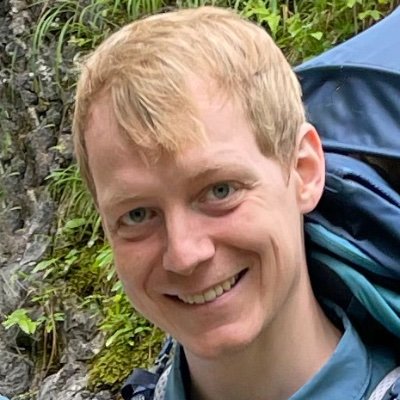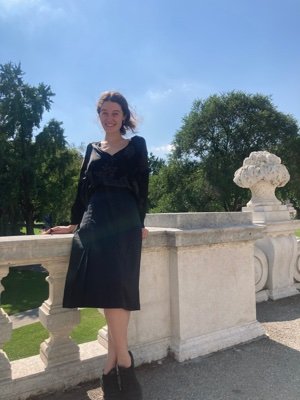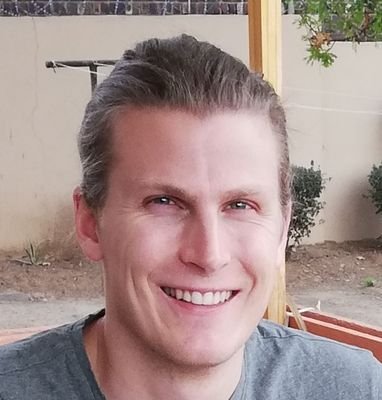
Mick Bonner
@michaelfbonner
Followers
930
Following
310
Media
34
Statuses
248
Assistant Professor @jhucogsci studying human vision using cognitive neuroscience and machine learning
Baltimore, MD
Joined January 2019
Do neuroscientists need deep learning to explain brain representations? Our new paper shows that architectural manipulations alone—without pretraining—go surprisingly far in explaining visual cortex representations. Led by a fantastic former master’s student @AtlasKazemian
Super excited to share that my Master’s project, “Convolutional architectures are cortex-aligned de novo,” has been published in Nature Machine Intelligence! https://t.co/Zmy1XwymFB w/ @EricElmoznino @michaelfbonner
0
1
4
🎓Recruiting Ph.D. students for Fall 2026!🎓 We study commonalities & differences across brains, and how they relate to cognition, language, & disorders. We develop brain templates, improve hyperalignment, and compare human brains with monkey brains & DNNs. https://t.co/CgjhD5Zsh0
6
82
384
Please RT! I am looking for a PhD candidate in the area of Computational Cognitive Neuroscience to start in early 2026. The position is funded as part of the Excellence Cluster "The Adaptive Mind" at @jlugiessen. Please apply here until Nov 25: https://t.co/s8ZxH4oLfQ
4
129
286
Introducing CorText: a framework that fuses brain data directly into a large language model, allowing for interactive neural readout using natural language. tl;dr: you can now chat with a brain scan 🧠💬 1/n
6
36
173
Excited to share our paper w/ @Chris_I_Baker in @NatureComms linking active vision & memory! We provide evidence that gaze reinstatement & neural reactivation are deeply related phenomena that jointly reflect the experiences constructed during recall. https://t.co/WK18jVbiUu 1/9
nature.com
Nature Communications - When people recall a movie, their eye movements and brain activity resemble those observed during the viewing. These behavioral and neural reactivations are linked through a...
1
7
32
Do DNNs represent images in the same way as the human brain? Our new work in #CCN2025 Proceedings suggests that DNNs and brains only agree on the gist but not the actual details of what a scene looks like. https://t.co/4w8PZGIJtb
0
14
89
🚨 Finally out in Nature Machine Intelligence!! "Visual representations in the human brain are aligned with large language models" https://t.co/GB5k6IV4Jg
nature.com
Nature Machine Intelligence - Doerig, Kietzmann and colleagues show that the brain’s response to visual scenes can be modelled using language-based AI representations. By linking brain...
2
55
243
Exciting new preprint from the lab: “Adopting a human developmental visual diet yields robust, shape-based AI vision”. A most wonderful case where brain inspiration massively improved AI solutions. Work with @lu_zejin @martisamuser and Radoslaw Cichy https://t.co/XVYqQPjoTA
arxiv.org
Despite years of research and the dramatic scaling of artificial intelligence (AI) systems, a striking misalignment between artificial and human vision persists. Contrary to humans, AI heavily...
5
51
145
Excited to announce that this paper is now out in @ScienceAdvances
science.org
Probing neural representations reveals universal aspects of vision in artificial and biological networks.
What do artificial and biological vision have in common? Shared architectures? Shared task objectives? In this preprint, we suggest a more general explanation: they share universal dimensions of natural image representation.
1
8
46
Very happy to announce that our paper comparing dimensions in human and DNN representations is now out in @NatMachIntell
https://t.co/RlaPcfrqLT
nature.com
Nature Machine Intelligence - An interpretability framework that compares how humans and deep neural networks process images has been presented. Their findings reveal that, unlike humans, deep...
What makes humans similar or different to AI? In a new study, led by @florianmahner and @lukas_mut and w/ @umuguc, we took a deep look at the factors underlying their representational alignment, with surprising results. https://t.co/w1YNZhS6ZW 🧵
2
21
78
I'm thrilled to see this preprint out! Lenny compellingly demonstrates, in a data-driven way, a coding scheme unifying distributed dimensions & category selectivity.➡️Higher visual cortex comprises many partially overlapping tuning maps that include but go beyond category tuning!
How is high-level visual cortex organized? In a new preprint with @martin_hebart & @KathaDobs, we show that category-selective areas encode a rich, multidimensional feature space 🌈 https://t.co/4dU8LVXC4f 🧵 1/n
1
5
45
What shapes the topography of high-level visual cortex? Excited to share a new pre-print addressing this question with connectivity-constrained interactive topographic networks, titled "Retinotopic scaffolding of high-level vision", w/ Marlene Behrmann & David Plaut. 🧵 ↓ 1/n
4
30
87
Now out in Nature Human Behaviour @NatureHumBehav: “End-to-end topographic networks as models of cortical map formation and human visual behaviour”. Please check our NHB link: https://t.co/lgb4ZQmWo0
3
15
74
Come to our CCN workshop! Blending iophysical constraints and neural networks. Topographical ANNs + and much more. @meenakshik93 @talia_konkle @PouyaBashivan @nmblauch @TimKietzmann @GwilliamsL @apurvaratan @jakhmack @Pieters_Tweet @martin_schrimpf Andrew Miri Nabil Imam
Announcement: Workshop at #CCN2025 🧠 Modeling the Physical Brain: Spatial Organization & Biophysical Constraints 🗓️ Monday, Aug 11 | 🕦 11:30–18:00 CET |📍 Room A2.07 🔗 Register: https://t.co/LkSqg2hbZW
#NeuroAI @CogCompNeuro
0
9
57
Exciting new preprint from the lab, led by an amazing student, @ckelseyhan!
How do different brains create unique visual experiences from identical sensory input? New preprint w/ @MichaelFBonner: "High-dimensional structure underlying individual differences in naturalistic visual experience" 🧠 https://t.co/m4r1qpWRlh
0
3
9
Our lab is present at #VSS2025, so let me highlight some of the things we have been up to with a talk and three posters. Would love to see you around! 🧵
1
1
18
Better artificial intelligence does not mean better models of biology Drew Linsley, Pinyuan Feng, Thomas Serre https://t.co/HvtKV2IdNs
arxiv.org
Deep neural networks (DNNs) once showed increasing alignment with primate perception and neural responses as they improved on vision benchmarks, raising hopes that advances in AI would yield...
2
17
89




















